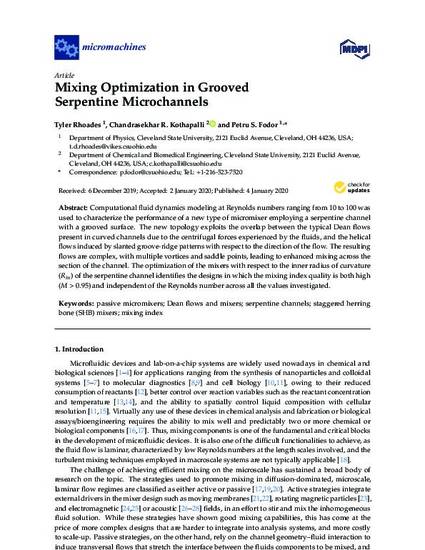
© 2020 by the authors. Licensee MDPI, Basel, Switzerland. Computational fluid dynamics modeling at Reynolds numbers ranging from 10 to 100 was used to characterize the performance of a new type of micromixer employing a serpentine channel with a grooved surface. The new topology exploits the overlap between the typical Dean flows present in curved channels due to the centrifugal forces experienced by the fluids, and the helical flows induced by slanted groove-ridge patterns with respect to the direction of the flow. The resulting flows are complex, with multiple vortices and saddle points, leading to enhanced mixing across the section of the channel. The optimization of the mixers with respect to the inner radius of curvature (Rin) of the serpentine channel identifies the designs in which the mixing index quality is both high (M > 0.95) and independent of the Reynolds number across all the values investigated.
Available at: http://works.bepress.com/Chandrasekhar-Kothapalli/59/
